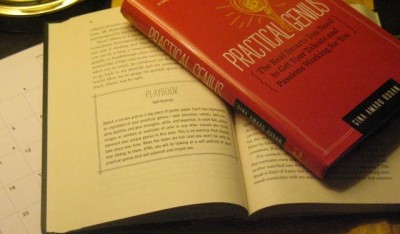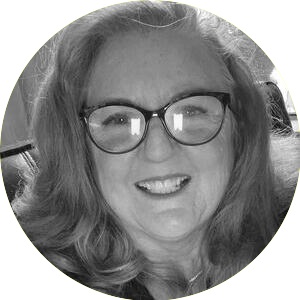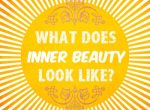Last updated on July 8th, 2022 at 04:45 pm

Rudan says,
“For many of us, our form of play is our greatest passion, so don’t ignore play when considering your passion. Keith Carroll, the renowned leader of the play movement, believes we all can find our inner genius through play: ‘
Once you find your source of play let it be your life’s work so much so that no one, not even you, will be able to tell the difference between work and play.”
I promised myself I would work through this book each Sunday and note any insights into identifying if the dream I picked is the right one.
I worked through the section of the book where Gina walks you through creating your own Playbook.
What is a playbook?
A playbook is your snapshot moment in life. Gina wants you to explore your life so you can tell a passionate story of who you are when you meet people and in your personal conversations. She hates the standard small talk like, “I run a popular website known as 8 Women Dream.”
She’d rather I’d say …. wait I’m getting ahead of myself. Let me walk you through it so you can do it too.
What’s your story?
Gina makes the argument that your Practical Genius resides in the place where your hard and soft assets meet and the stories you tell everyone about who you are. To quote her, ” Expressing your practical genius is not about expressing the limitedness of our personalities or egos but more about expressing the wonder of the depths of the oceans of who we are as complex multidimensional creatures.”
The first homework assignment
Take a whole day to note all the instances and ways you tell your story– if at all. What are the signals you send in your ordinary exchanges with people? Is there anything consistent about the way you project yourself to those who populate your day?
Do you convey energy, a sense of contribution, or connections with others that are a reflection of who you are across all of your communications? When you email or tweet an update your profiles on any one of digital venues, are you purposefully telling your story– or are you just regurgitating empty bits of information that have no meaning and steal time from you and everyone who reads about you?
OUCH.
I know this drill. You’d be surprised at what you know — you know about yourself when you look hard enough. I get amazing feedback from my Toastmasters group when I give a speech. One thing they notice when I give speeches about my Hashimotos life is that I draw my body in, close myself off and give the visual impression that I am conserving energy.
They love my thyroid stories, but I seem to be giving the impression that the listeners should protect me. I don’t want that. I am out to show the world that you can achieve great success — even when your thyroid hates you. Dealing with health issues should never stop you from achieving your dreams. Look at Stephen Hawking. Has he let his disease prevent him from being the physicist my son loves?
No!
How powerful was the feedback on my speeches? I had no idea that my body language told a different story.
The two-minute drill
In this part of the book, Rudan further challenges the reader to practice that you have only two minutes to get someone to care about you. No using your kids, your illness, or your sob stories. How would you get someone to fall in love with your passion if you had just 120 seconds?
Are you telling the right story about who you really are?
Gina Rundan argues that your real story matters because it is the truth. Your real story inspires, explains, or connects you with someone else. Because it is powerful, free, persuasive, natural, entertaining, memorable, and, above all, authentic.
But what is my real story?
Designing your story
You can do this with photographs or by telling stories as answers to the following questions –
• Can you name the all-time greatest moment of your life (you cannot use when your child was born or your wedding day)? What led up to it and what happened next?
Well, how’s that for a tough question? I want to answer when my son was born, but if I factor that wonderful event out of the equation then I do remember the time in ballet when I performed and received my first standing ovation.
It was like no high I have ever experienced and I instantly wanted to go back out on stage in front of hundreds and hundreds of people.
What lead up to it was years of practice and a desire to have my own ballet solo. I was given the part of the Russian Doll in the first act of Nutcracker, where my ballet teacher brought in a coach from the San Francisco ballet.
He was also dancing with one of the leads. I had a second part as a Russian Candy Cane with three other dancers. I had a small solo in the middle of the piece. In the middle of this dance, I had to do a high leap split into the air.
This one night — it was as if I was possessed by the great gods of dance and everything I did seemed to click. My Russian Doll dance went well, but it wasn’t until I was high in the air of that Russian Candy Cane solo that I realized I had just done the greatest dance leap of my life.
The audience responded with a standing ovation when I was done.
What happened next is that I came into my own confidence as a dancer. I was previously discounted as a possible contender because of my height. I am 5′ 10. Back in my day, dancers had to be 5’6″ or shorter and there were no real opportunities for professional dancers outside the ballet world.
My ballet teacher could be mean and after that ovation, I could care less what she thought. I knew I could dance.
• What was your biggest “aha” moment when you learned and experienced something so profound in your life that it changed you forever?
My biggest “aha” moment was when my dad died and I got how brief life can be. I suddenly understood how important it was to tell people that you love them, even if they don’t feel that way about you — and be okay with it. I was able to forgive myself for being a typical bratty teenage girl because of how often I told my dad I loved him and how often he told me (and hugged me) back.
• What is the wildest thing you’ve ever done? What made you do it?
Which one? Since “adventure” is my word I tend to take risks — more when I was younger and before I was a mom. But if I had to name the wildest …

I went for a flight with a stunt pilot I hardly knew where I was fitted with a parachute. I was determined to experience life as a stunt pilot and a guy who liked me at the time just happened to be one. When he asked me if I wanted to go up in the air with him I answered yes before taking a breath. He told me that I would probably throw up.
I was determined not to throw up.
To give you an idea of the type of stunt flight I went on in this guy’s Citabria plane — when we landed his fellow pilot friends called him an ass. At this point, I was throwing up the skin from the bottom of my feet in the bathroom. But I didn’t throw up in his plane.
Even though all the barrel rolls over the Northern California Geysers.
My nurse mother had to give me a pregnancy nausea pill and send me to bed for 24 hours so I could stop feeling like I was still flying. I was sooooooo proud that I did it.
I’ve written about the place where your hard and soft assets meet and how your narrative should always take you to that place. Gina’s idea with these questions is to get you to realize that you can have several versions of your story, but they all express, portray, reveal, illustrate, project, and attract others to your genius.
Snapshot moments
• Is there a photograph of you that you come back to again and again because you (and only you) know that it expresses every single thing about you? When you look at that photo what do you see? Do you see your story? Tell yourself the story you see in that photograph.
This was hard for me because I really don’t look at photos of myself doing anything. I have all kinds of photos of my son but of me? Not so much. And certainly, none that I look at of myself. The photos I enjoy are those of my family and friends. Gina doesn’t give any advice if this question stumps you.
Scavenger hunt
Gina wants you to dig through your life as if you really have an empty word bank, and begin identifying the words and phrases you own by grabbing a few of your favorite periodicals and highlighting the words or phrases on an index card, and spreading them on a table. Move them around, change their order try to find the hierarchy of meaning to you. Collect those words into the start of a vocabulary log that you can continue to tweak refine and add to.
This one still confuses me. You can see how varied my interests are. But maybe I should look at all the books I read and see if there are words that draw me in…
Self-Portrait
Sketch a six-box grid on a big piece of poster paper. Each box represents an ingredient of your practical genius– your passions, values, and creative abilities and your strengths, skills, and expertise. In each box, place images or symbols or swatches of color or any other visuals, you think to represent your unique genius in this area. This is an exercise that should take place over time.
I have vision boards, but I’m still not sure about all this. I did find that I need to change up my routine more. Doing new things makes me happy. It appeals to the adventurer in me. The rest of these exercises? I’m not so sure–I guess we’ll see as I walk us through her book.

Catherine Hughes is an accomplished magazine columnist, content creator, and published writer with a background as an award-winning mom blogger. She partners with companies to create captivating web content and social media stories and writes compelling human interest pieces for both small and large print publications. Her writing, which celebrates the resilience and achievements of Northern California’s residents, is featured in several magazines. Beyond her professional life, Catherine is passionate about motherhood, her son, close friendships, rugby, and her love for animals.
Note: Articles by Catherine may contain affiliate links and may be compensated if you make a purchase after clicking on an affiliate link.




